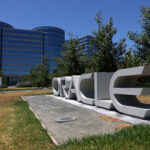The property/casualty insurance industry reported a statutory rate of return on average surplus of 9.5 percent through the first nine months of 2005, marginally below the 10.5 percent average return recorded during calendar year 2004. The results were released by the Insurance Services Office, Inc. and the Property Casualty Insurers Association of America.
The financial performance of the property/casualty insurance industry during the first nine months of 2005, while falling well short of what insurers had been hoping for, nonetheless provided stunning proof of the resilience of the property/casualty insurance industry in the face of unprecedented adversity.
Rocked by record catastrophe losses approaching $50 billion, the industry broke even from an underwriting perspective with a combined ratio coming in at an uncanny and surprisingly low 100 even. This means that effectively every dime of premium income that came in the door through the first nine months of 2005 exited in the form of claims payments, claims reserves and expenses-with nothing left over for profit.
All was not lost, however, as insurers benefited from rising interest rates and modest stock market gains to generate $40.7 billion on their investment portfolio, enough to tip the balance toward a 9.5 percent return on average surplus. Granted, the 9.5 percent return through the first nine months is a far cry from the 15.3 percent return posted through the first half of 2005, but is much better than expected, and a reasonable fourth quarter (Hurricane Wilma notwithstanding) should push overall profitability for 2005 into the 10 to 11 percent range, roughly on par with the 10.5 percent return in 2004.
It must be noted, however, that profitability in the industry is still disappointing low, coming in well below the expected 14 percent return for the Fortune 500 group of companies this year. Prior to Hurricane Katrina the industry was on a trajectory to record its highest level of profitability since 1987.
Sources of resilience
The ability of property/casualty insurers to weather record catastrophe losses exceeding $55 billion in 2005 fresh on the heels of record losses of $27.5 billion in 2004 derives from four main sources: strong underwriting performance (ex-catastrophes); heavy use of reinsurance; record claims-paying capacity; and investment income.
Better than expected
The financial and underwriting performance of the property/casualty insurance industry during the first nine months of 2005 was much better than expected. Although buffeted by record catastrophe losses, insurers managed to break even from an underwriting perspective, suggesting that 2005 will conclude with an overall underwriting profit, only the second since 1978. The surprisingly good results suggest imply that insurers are doing a good job of spreading risk on a global scale, largely through extensive use of reinsurance. At the same, the industry remains attractive to investors, who have poured more than $20 billion into new and existing platforms post-Katrina and pushed stocks to their 2005 highs.
The storms of 2005 were not solvency-threatening to the industry as a whole, nor did they cause a net reduction in claims paying capacity. However, record catastrophe losses in 2004 and 2005 did take their toll on profitability. Return on equity in both years would have been in the 13 percent to 15 percent range each year-on par with the Fortune 500 group-had catastrophe losses been anywhere near “normal.” On a catastrophe-adjusted basis, 2005 is likely to represent the peak in the current cycle in terms of underwriting and profit performance. Combined ratios, however, are likely to rise in 2006 if catastrophe activity subsides even modestly.
One cause for concern overshadowed by recent events is the fact that top line growth through the first nine months of the year was just 1.3 percent and is, in fact, negative on an inflation-adjusted basis. There are likely to be price impacts on residential, commercial property and property catastrophe reinsurance prices in the aftermath of this year’s hurricanes that will push net written premium growth upward, but the affects will be focused on the Southeast and Gulf coast areas.
Robert P. Hartwig, is senior vice president and chief economist for the Insurance Information Institute. This is excerpted from his more extensive commentary on the 9 months results of the industry available at www.iii.org.
Topics Catastrophe Profit Loss Underwriting Property Market Property Casualty Casualty
Was this article valuable?
Here are more articles you may enjoy.


 Billionaire Ellison Is Moving Oracle to Nashville From Texas
Billionaire Ellison Is Moving Oracle to Nashville From Texas  4,800 Claims Handled by Unlicensed Adjusters in Florida After Irma, Lawsuit Says
4,800 Claims Handled by Unlicensed Adjusters in Florida After Irma, Lawsuit Says  Allstate Tops Profit Estimates on Higher Premiums, Investment Returns
Allstate Tops Profit Estimates on Higher Premiums, Investment Returns  ‘Buffett Got it Wrong’ on California Fire Risk: PG&E CEO
‘Buffett Got it Wrong’ on California Fire Risk: PG&E CEO 


